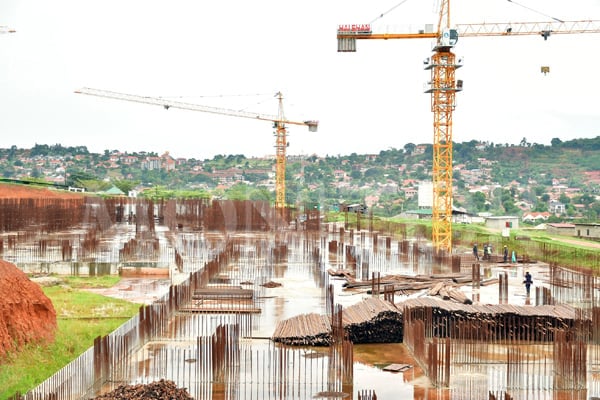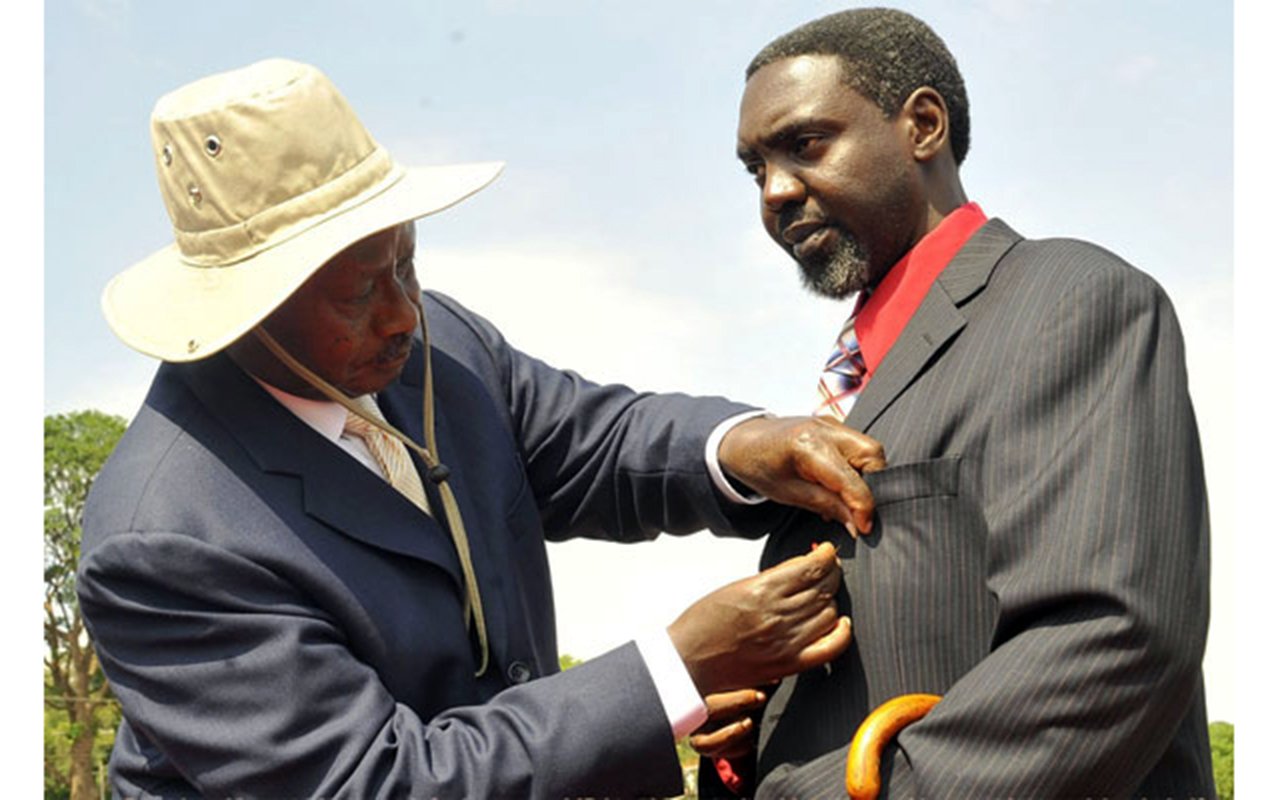Prime
Foreign pilgrims stand in awe of Namugongo

Kenyan pilgrims at the Catholic shrine. Photo / Stephen Otage
What you need to know:
- In an interview at the Catholic Shrine on Thursday, Ms Bwalya revealed that—back in her native Zambia—she is part of a lay group known as St Charles Karoli Lwanga.
- They annually commence a nine-day Novena every May 25 intended to celebrate the Ugandan Martyrs. They have some type of wood they throw on an open fire to imitate the execution of the Uganda Martyrs.
Among the millions of pilgrims that were in Namugongo to mark Martyrs’ Day yesterday were those that came far and wide. Take Ms Catherine Metany Bwalya, a 72-year-old retired Zambian teacher.
Ms Bwalya told Saturday Monitor that the day of the Uganda Martyrs has always been celebrated as a big feast for Catholics in Zambia thanks to Bishop Francesco Costantino Mazzieri’s efforts in 1953.
In an interview at the Catholic Shrine on Thursday, Ms Bwalya revealed that—back in her native Zambia—she is part of a lay group known as St Charles Karoli Lwanga. They annually commence a nine-day Novena every May 25 intended to celebrate the Ugandan Martyrs. They have some type of wood they throw on an open fire to imitate the execution of the Uganda Martyrs.
Ms Bwalya told Saturday Monitor that members of her lay group believe that healing can be received when one prays to God through the Uganda Martyrs.
Her colleague—Ms Monica Kampamba—with whom she flew in on Tuesday to celebrate yesterday’s event, says she was healed of ulcers in 2017 when she drank the holy water in Namugongo. Ms Kampamba had been battling the ulcers for two decades. She further told Saturday Monitor that her healing motivated her to read more about the Uganda Martyrs.
In 2018, they returned to Uganda to hear firsthand about the remarkable journey to martyrdom from Munyonyo, St Balikuddembe Market, through Ntinda to Namugongo. To affirm her resolve and faith in the martyrs, Ms Kampamba pulled out a camcorder she is using to capture the sites they are touring after the celebrations. She says they intend to publish a book to educate Zambians about the Uganda Martyrs.
Before the pandemic struck, a Zambian contingent annually travelled either by bus or air from churches named after St Charles Karoli Lwanga, St Gonzaga or St Andrea Kaggwa to celebrate the Uganda martyrs.
Tanzanians also follow Martyrs’ Day religiously. What makes their bond even stronger is the fact that they celebrate Mwalimu Julius Nyerere Day every June 2. Plans are underway to make him a saint as well.
‘More can be done’
Elsewhere, Mr John Justice, a catechist from the Catholic Diocese of Homabay in Kenya, has been leading Kenyan pilgrims to Uganda for the last five years. He is disappointed with the low value Ugandans attach to the martyrs.
He also told Saturday Monitor that he takes exception with the government of Uganda’s decision to allow discotheques and bars next to the shrines in Namugongo.
“I am requesting your government to do away with the discotheques and clubs near the shrines. We travel here from miles away to get spiritual healing and nourishment, which requires a quiet environment for us to meditate with God,” he said, adding that Uganda enjoys peace and stability thanks to her martyrs.
Mr Justice adds that Kenyans believe that the shrines have spiritual healing because of the holy water. He says since time immemorial those who have made a pilgrimage to Namugongo have confessed getting healed and this information is documented in a hymn book written in their Dholuo dialect. It can easily be accessed in Nyanza, Kenya.
Mr Justice also recalls songs they would sing while in school about the Uganda Martyrs. This, he adds, inspired believers to trek on foot from as far as Mombasa to Namugongo in search of blessings from the martyrs.
He advises the government of Uganda to create legislation or policies to tap into the burgeoning religious tourism by making decent food as well as authentic souvenirs readily available in Namugongo.
Healing power
His fellow pilgrim this year—a 47-year-old gold miner from Migori South Nyanza called Rose Auma—says she was motivated to come to Namugongo this year following a revelation of a miracle that happened to a child who made a pilgrimage in 2018.
Ms Auma says the child who belongs to St Charles Lwanga Church, Makanda Parish Migori County, had cerebral palsy but got healed the moment he set foot at Namugongo Catholic Shrine. She has also heard testimonies of healing from Christians from Kisumu, Nakuru and Maseno.
Mr Erika Banga, 47, from Kisangani in the Democratic Republic of Congo (DR Congo), says he has been coming to Namugongo since 2017. He attributes his pilgrimages—broken only by pandemic restrictions in 2020 and 2021—to the teachings of the martyrs in churches named after Charles Lwanga, Mukasa and Matia Mulumba in his native country.
He says there are Congolese religious songs which have been composed in their memory talking of the martyrdom sites such as Munyonyo, Kiwamirembe, and Namugongo. He adds that annually pilgrims from DR Congo come to Namugongo from churches in Kisangani and Ituri regions.
Mr Simon Minane, 62, a Burundian refugee who has lived in Uganda for the last 10 years, says the story of the Uganda martyrs has been taught in Burundian schools since time immemorial.
He further reveals that many churches in his native county are named after martyrs such as St Charles Lwanga, St Matia Mulumba and St Joseph. Mr Minane also named his two sons after some of the Uganda martyrs.
Who is St Charles Lwanga?
Charles Lwanga was a Muganda who was born in Buddu in a place called Binazi. After the death of Joseph Mukasa, Lwanga was ordered by the king to take up his roles as a chief page at that time and all duties of Joseph Mukasa. Lwanga sought baptism and was baptised on November 15, 1885 by Pere Giraud.
His death
On May 25, 1886 Mwanga ordered a general assembly of the court at Munyonyo where he condemned two of the pages to death. At this Lwanga secretly baptised his charges who were still catechumens.
During the persecution Lwanga remained firm up to the time of death and he encouraged many pages to stand firm in faith.
Martyrdom
He was separated from the others on June 3 and was burnt in a slow fire from foot to the head. As he was being burnt, Lwanga said to the executioner: “It is as if you are pouring water on me. Please repent and become a Christian like me.”
Did you know?
Where the present Basilica stands is where Lwanga faced his execution?
Lwanga was appointed by Pope Pius to be the patron saint of the youth.
The construction of the Basilica took eight years (1967-1975) and it has 22 pillars representing the 22 martyrs.
13 martyrs were burnt and the rest died through various ordeals.
Courtesy of Padre Mukasa B Jnr in the On pilgrimage to Namugongo Series 2022




